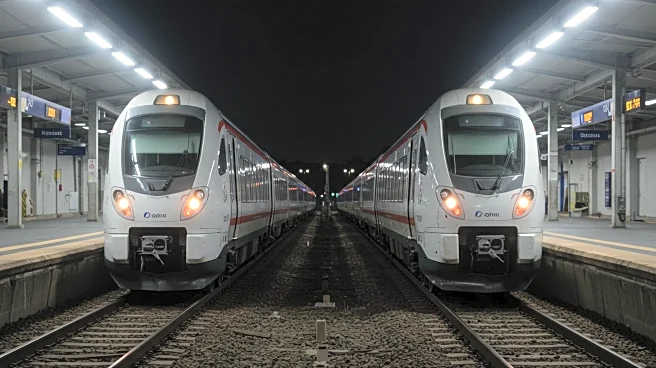What's Happening?
The Association of American Railroads (AAR) reported slight declines in U.S. rail carload and intermodal volumes for the week ending August 16. Rail carloads fell by 0.9% annually to 228,884, while intermodal containers and trailers decreased by 0.6% to 284,086 units. Despite these declines, year-to-date figures show a 2.7% increase in rail carloads and a 4.4% rise in intermodal units. The data reflects fluctuations in commodity groups, with coal and forest products seeing gains, while miscellaneous carloads, metallic ores, and grain experienced decreases.
Why It's Important?
The slight declines in rail carload and intermodal volumes highlight the ongoing challenges in the U.S. rail industry, which is a critical component of the nation's supply chain. Fluctuations in commodity shipments can impact the efficiency and profitability of rail operators, affecting industries reliant on rail transport. The data also provides insights into broader economic trends, as changes in rail volumes can indicate shifts in industrial production and consumer demand. Stakeholders, including rail companies, shippers, and policymakers, must monitor these trends to ensure the resilience and competitiveness of the rail industry.
What's Next?
As the rail industry navigates these fluctuations, stakeholders will focus on strategies to optimize operations and enhance service offerings. This may involve investing in infrastructure improvements, adopting new technologies, and exploring partnerships to increase efficiency and reduce costs. The industry will also be closely monitoring economic indicators and regulatory developments that could impact rail volumes. Collaboration between rail operators, shippers, and policymakers will be essential to address challenges and capitalize on opportunities for growth. The outlook for the rail industry will depend on its ability to adapt to changing market conditions and meet the evolving needs of its customers.











